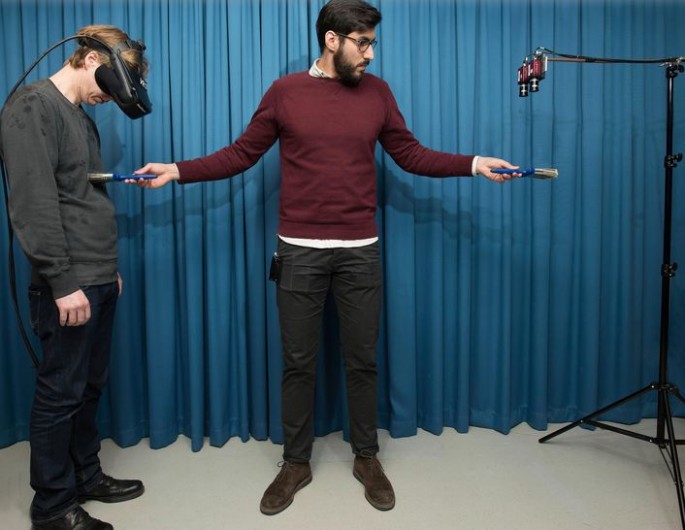No one can become invisible -- yet -- but a new experiment shows us what invisibility might feel like.
Using virtual reality goggles, an experiment conducted in Sweden convinced volunteers into thinking their bodies had become invisible. But the point of the illusion experiment wasn't to trick the volunteers into believing they were invisible. It was to find out the effects of "invisibility" on the strength of a person's social fears.
"The experience of having an invisible body seems to reduce stress, specifically the stress we feel when standing in front of strangers," says Arvid Guterstam, a cognitive neuroscientist at the Karolinska Institutet in Sweden that conducted this elaborate psychological experiment.
The experiment conducted at the Karolinska Institutet also shows how powerful the brain is in shaping reality.
"Almost everything we perceive is an illusion based on partial information," said Susana Martinez-Conde, a neuroscientist at SUNY Downstate Medical Center said to the Smithsonian.
In the experiment, volunteers wore a pair of virtual reality goggles that showed them their bodies were "invisible" and that there was only empty space where their body parts should be.
The neuroscientists conducting the experiment said the volunteers looked down and only empty space where their bellies and legs should be, in effect rendering the bodies of the volunteers "invisible" to the volunteers' brain.
And to prove how powerful the brain is in creating "reality", Guterstam stroked each volunteer's stomach with an unseen paintbrush while waving a second brush under the camera where a volunteer could see it.
Surprisingly, video showed that if the pair of brushes moved in the same patterns at the same time, the volunteers thought they had become invisible.
The contradictory information assaulting the brain in which the feel of the bristles against their torsos clashed with the sight of a brush touching nothing convinced many volunteers they had become well and truly invisible.
Proof that their minds had accepted their bodies were invisible was reinforced by a test in which a knife was thrust into the empty space where their bodies were supposed to be. That imaginary knife caused some of the volunteers to react as if they had been stabbed.
The last experiment produced equally astounding results. Still wearing VR goggles and thinking they were still invisible, the volunteers were shown the sight of a crowd of virtual people staring at them. Data showed the volunteers became only slightly uncomfortable at the sight of a strangers staring at them since the volunteers were convinced the crowd couldn't see them.
"It's not a dramatic difference, but it's a difference that can't be explained by chance," said Guterstam.
He noted virtual reality might become a tool for treating social anxiety and treating an intense fear of social situations accompanied by physical symptoms such as a pounding heart, sweating and shaking.
Guterstam hopes to tackle a more philosophical conundrum: how being invisible influences moral decisions, a dilemma faced by the invisible man in H.G. Wells' classic novel.



























